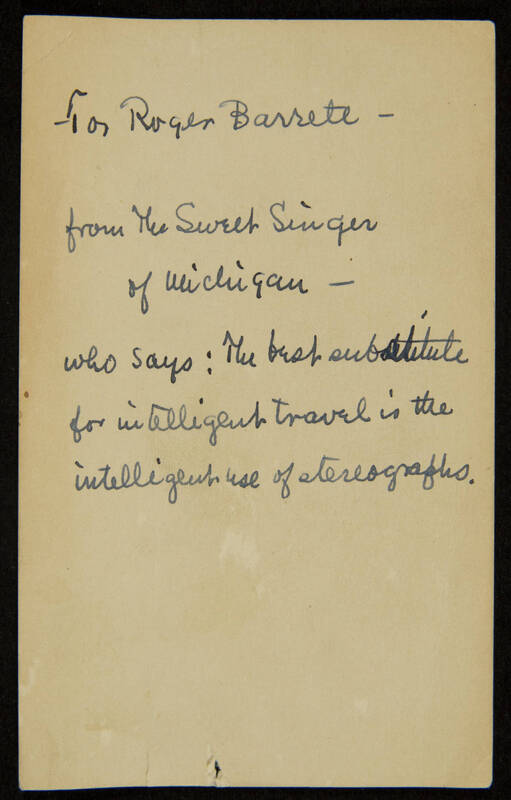Carl Sandburg: Folk Music
For a time during the early 1900s, despite Sandburg’s poetic and biographical success, the public may have actually known him best as a traveling folk musician. Folklore and folk music had always been interests of Sandburg’s. In his younger years, he played banjo, but focused more on guitar as the years went by. He sang and played music in his hometown, as well as in college, but it was only when he was traveling to lecture and read poetry that his music became part of his career. Despite not being a classical trained or particularly talented musician, he engaged audiences across America (one critic wrote “Sandburg may not be a great singer, but his singing is great”) [7].
Sandburg's interest in folk music in particular had been with him since he was young; in his travels during his twenties, he was collecting songs from wherever he could. When, later in life, it became known that he would perform music along with his lectures and readings, people would share songs with him or even send them to him through the mail so that they could be added to his collection. In 1927, shortly after the publication of the first Lincoln biography, he compiled The American Songbag. This volume contained almost 300 American folksongs of all types and styles.
Sandburg’s reputation as a journalist, poet, and biographer, combined with the fact that he had become a traveling musician as well, made him into a popular American figure during the late 1920s. He was reportedly earning the most money he ever had, thanks to The Prairie Years, and he was also still working as a journalist along with his traveling lecture work. He arrived at the point where he was receiving a vast number of lecture requests; despite there being “more than he could or wanted to accept,” he continued to travel as he could, because this allowed him to keep in contact with his readers and the general public, allowing him to “[mine] the deep natural vein of poetry in the idioms and folklore of the American people” [8]. After years of traveling around America, Sandburg retired to Connemara, a home he had purchased in North Carolina in the 1940s. Although he did still travel, he spent most of his time at Connemara during the latter half of his life.
[7] Niven, Carl Sandburg, 446
[8] Niven, Carl Sandburg, 447

